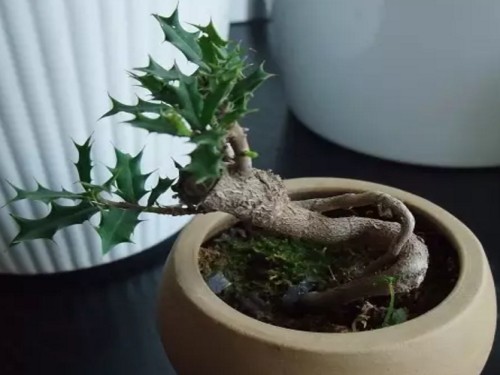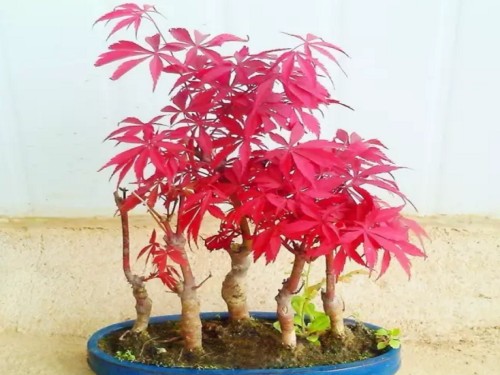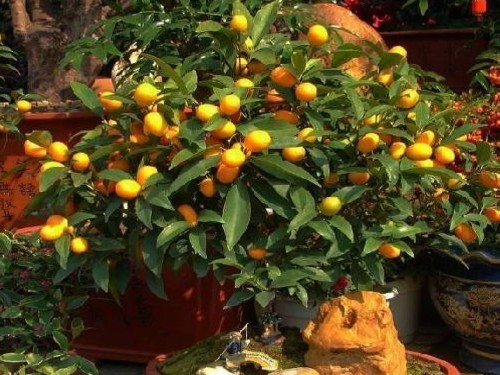Maintenance method of bonsai with Chinese wolfberry
Medlar bone, also known as cat thorn, tiger thorn, etc., is an evergreen shrub or small tree with strange leaves, bright green, evergreen four seasons, red fruit full of branches after autumn, not withered by winter, gorgeous and lovely, it is an excellent ornamental leaf and fruit tree species, which is often used for Christmas decoration in Europe and the United States, so it is also called "Christmas tree".
The branches and leaves of Chinese wolfberry are luxuriant and the leaf shape is peculiar, especially after autumn, the red fruit is numerous, bright and beautiful, it is an excellent variety of flowers and plants. The branches of Chinese wolfberry are dense, the leaves are peculiar, and the red fruits are bright in autumn. it is an excellent tree species for viewing leaves and fruits. Old pile bonsai posture is quaint, evergreen all the year round, suitable for viewing all the year round.

[maintenance site]
Chinese wolfberry is resistant to yin and should be placed in a damp environment to grow. Need to be maintained under the shade or forest shade in summer. It is necessary to enter the house in winter, and the south of the Yangtze River can overwinter outdoors.
[watering]
At ordinary times, it is appropriate to keep the basin soil with a certain degree of humidity, watering frequently in the spring and summer growing season, and often spraying water on the leaf surface. Chinese wolfberry is resistant to drought and needs to be watered frequently during the period of vigorous growth. it is generally necessary to keep the basin soil moist and without stagnant water, and it is often necessary to spray water to the leaves in summer to facilitate evaporation and cooling.
[fertilization]
In general, thin cake fertilizer is applied every two weeks in spring, topdressing once a month in autumn, no fertilizer in summer, and base fertilizer in winter every year. During the growing period, thin and mature cake fertilizer can be applied every half a month, and only once base fertilizer (organic fertilizer) is applied in winter.
[pruning]
Medlar bone has a strong germinating power and is very resistant to pruning. For Chengjing works, unnecessary overgrown branches, germinating branches and redundant buds can be cut off to maintain a certain tree shape. For the wood that needs to be processed, some branches can be retained according to the need to facilitate processing and modeling. The Chinese wolfberry is resistant to pruning. It can be trimmed once every year in June, July and late autumn, cutting off dead branches, overdense branches and overgrown branches, and cutting too long branches short.
[heart-picking]
In cultivation, we should often pick the heart and pinch off the overlong shoots, so as to promote the germination of more branches and leaves and make the tree shape more plump and beautiful.
[turn the basin]
Like fertile acidic soil, not resistant to salt and alkali. Medlar bonsai is usually turned once in 2-3 years, often in February-March in spring, and can also be carried out when trees enter the sleeping period of human body after autumn. When turning the basin, you can trim off part of the old roots, apply sufficient base fertilizer, retain the old soil of 1x2, and put it back on the basin.
[pest control]
There are few diseases and insect pests of Chinese wolfberry bone, and sometimes the branches and leaves are caused by coal fouling disease (also known as soot disease). Bordeaux liquid or stone sulfur mixture can be sprayed every 10 days before the plum rain season. Or spraying 2000 times of dimethoate EC in early spring to kill overwintering planthopper, once a week, three times in a row can control the harm of planthopper. Occasionally, when the scale insect is harmful, it can be sprayed with lead arsenate.
Time: 2019-06-01 Click:
- Prev

How to cultivate red maple bonsai
Red maple is a variety of green maple (chicken claw maple), the leaf color is red and beautiful, the leaf shape is beautiful, the tree posture is beautiful, the spring and autumn are full of red leaves, beautiful. Red maple, tree-shaped whirling, beautiful and moving. It is not only suitable to plant alone or in groups between mountains and rocks, green pines and cypresses, but also can be potted at home or made into bonsai for viewing, or can be cut and bottled.
- Next

Management of potted orange trees
Orange tree bonsai should be placed outdoors, pay attention to strengthen ventilation, receive sufficient direct sunlight. To keep the basin soil moist, do not lack water, water. Also do not because basin soil hardening, water flow is not smooth, and lead to basin soil waterlogging. Potted orange trees should be consciously cultivated to bear more autumn fruits for appreciation during the Spring Festival
Related
- Fuxing push coffee new agricultural production and marketing class: lack of small-scale processing plants
- Jujube rice field leisure farm deep ploughing Yilan for five years to create a space for organic food and play
- Nongyu Farm-A trial of organic papaya for brave women with advanced technology
- Four points for attention in the prevention and control of diseases and insect pests of edible fungi
- How to add nutrient solution to Edible Fungi
- Is there any good way to control edible fungus mites?
- Open Inoculation Technology of Edible Fungi
- Is there any clever way to use fertilizer for edible fungus in winter?
- What agents are used to kill the pathogens of edible fungi in the mushroom shed?
- Rapid drying of Edible Fungi

